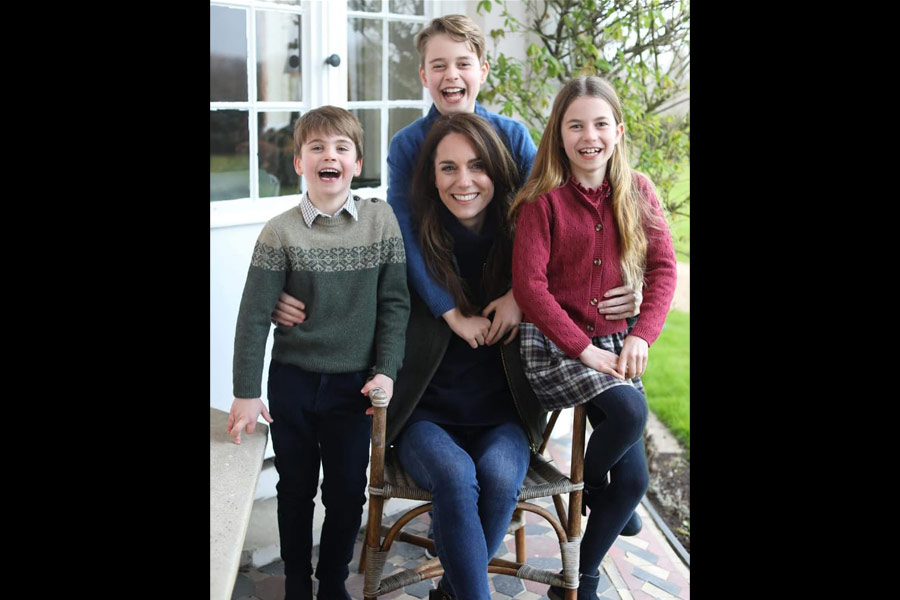What was supposed to be a happy picture of Kate Middleton, the Princess of Wales, with her children to celebrate Mother’s Day (in the UK) is fuelling debates about the limits to photo-editing tools. The official photograph, clicked by William, the Prince of Wales, in Windsor, was issued through wire services on March 10 but hours later a “kill” notice was posted by the likes of Reuters, Getty Images and Associated Press for manipulations that were made to it.
AP, in an article, said it was retracting the image “because closer inspection revealed the source had manipulated the image in a way that did not meet AP’s photo standards. For instance, the photo shows an inconsistency in the alignment of Princess Charlotte’s left hand”.
Soon after agencies withdrew the photo, Kate issued a statement on X (formerly Twitter): “Like many amateur photographers, I do occasionally experiment with editing. I wanted to express my apologies for any confusion the family photograph we shared yesterday caused. I hope everyone celebrating had a very happy Mother’s Day. C.”
The controversy around the first photo of the Princess of Wales since her unspecified abdominal surgery in January comes at a time when artificial intelligence is helping generate photos. In the picture, the Princess of Wales is seen surrounded by her children, Prince George, Princess Charlotte and Prince Louis.
There are quite a few inconsistencies in the image, especially the alignment of Princess Charlotte’s left hand. There is the issue of Charlotte’s hair on which someone may have tried to “feather” an abrupt cut-out but ended up making her hair look unnatural. Also, the pattern on Charlotte’s skirt appears to overlap where her sweater should be. Some of these tricks could be attributed to a rookie working with the Spot Healing tool in Photoshop. The brush removes unwanted spots, marks, or small objects in images. Photoshop selects and replaces pixels from another part of the image to blend in seamlessly.
AP guidelines allow “minor adjustments to photos”, like “cropping, dodging and burning, conversion into greyscale” but they’re strict with tweaks like red-eye, which photographers are not allowed to remove. There is no implication whether the entire photo is a fake or that the Princess of Wales is more unwell than she appears in the image but only to the degree to which a photo-editing software may have been used.
As of 4pm on Monday, the photograph remained on the X account of the Prince and Princess of Wales but the social media platform has added a note: “Major news agencies, including the Associated Press, Getty Images, and Reuters, note inconsistencies that suggest digital alteration by Kensington Palace.”
A far more aggressive form of image manipulation is allowed by artificial intelligence-powered tools like Midjourney and Google Gemini (Google paused the ability to produce images after backlash over the depiction of different ethnicities).
Last year, a number of photographs of Pope Francis wearing a blinged-out puffer jacket were found online and then there were pictures of former US president Donald Trump being arrested, besides AI-generated images depicting what looked like French President Emmanuel Macron caught up in a riot.
Photo manipulation tools are, in fact, easily accessible. Smartphones like Google Pixel allow AI-driven tools that can alter images, like erasing “unwanted” people/objects.










